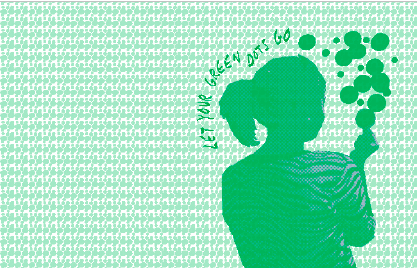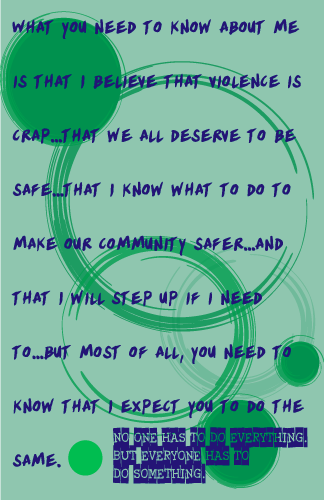
“Imagine a map of your school with red dots on it,” said Kristen Parks.
Imagine that each red dot represents a moment someone begins a hurtful act, such as raising an arm to hit a partner or typing a nasty tweet.
Any given school has far too many such incidences, she said.
Now imagine the map with green dots, Parks said. Each one of them represents the moment a bystander takes action to prevent violence or to foster safety.
The action may be as simple as asking, “Is everything all right?” Or it may involve getting someone else to intervene.
Parks is a senior trainer and curriculum development specialist at Green Dot et cetera, Inc., a nonprofit violence prevention program created in 2006 by Dorothy Edwards, a professor at the University of Kentucky.
The program is making a difference in high schools and colleges, where it addresses sexual assault, dating violence, bullying and stalking. It’s also being taught in other settings, such as the U.S. Air Force.
A five-year study conducted in 26 Kentucky high schools from 2009 to 2014 showed the program reduced sexual violence by half in schools. When harassment, stalking and dating violence were included, the incidence decreased 40 percent, according to the study, funded by the Centers for Disease Control and Prevention. Green Dot is seen as promising program for creating a safer environment for girls, LGBT students and others who are targets of aggression.
 It teaches students how to move from being passive bystanders to people who will intervene.
It teaches students how to move from being passive bystanders to people who will intervene.
It provides training to about 15 percent of students — those pinpointed as student leaders — who then teach other students.
They learn about patterns of violence and they learn to recognize interpersonal violence, Parks said.
“Most people don’t feel like they have the skills to effectively intervene,” she said.
The program helps students explore their own barriers to intervention.
Most people are good and decent, Parks said. But they may not act because they’re uncertain of what they’re seeing or they’re not sure how big a problem it is. They may be afraid a situation such as bullying will turn against them or they may fear what their friends will think.
“We validate these barriers,” she said.
One student’s barrier may simply be that she is shy. Another may say that same-sex relationships make them uncomfortable so they would not intervene if violence occurred between same-sex partners.
“We meet people where they are,” Parks said, but she tells them: “Think of what you can still do.”
At first, students may say they would only intervene in physical violence, she said. But “their line might start to inch down.”
Students are asked to consider: “What if people different from you are on the receiving end of dating violence, bullying or sexual assault?”
Green Dot trainers let students know they have options besides direct confrontation. They can involve others, such as a teacher or other adult. They can distract the people involved.
The goal is to put more green dots on the map than red dots, Parks said.
“That way, we start to see a culture shift,” she said.
Ultimately, the program enlists members of the community to create new social norms.
“It helps create a culture of safety,” Parks said.































